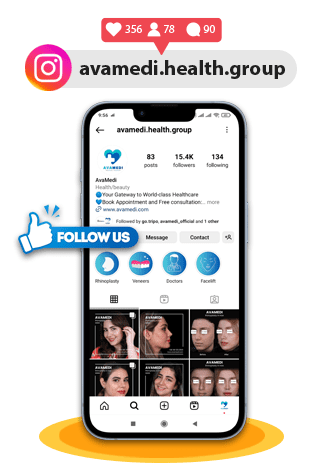What are the different types of nose shapes?
There are various nose shapes, and individual noses can exhibit various features. Here are some common types of nose shapes:
-
Straight Nose:
- A straight bridge with a slight slope.
-
Snub Nose:
- Short, small, and slightly upturned at the tip.
-
Roman Nose:
- A prominent bridge with a downward curve at the tip.
-
Aquiline Nose:
- Similar to the Roman nose but more curved, often associated with an eagle-like profile.
-
Greek Nose:
- Straight and narrow with a pointed tip.
-
Nubian Nose:
- Broad and flat with a wide base and flatter nostrils.
-
Hawk Nose:
- Similar to the aquiline nose but with a more prominent, hooked curve at the tip.
-
Celestial Nose:
- A small and straight nose with a slightly upturned tip.
-
Turned-Up Nose:
- The tip of the nose points upward.
-
Button Nose:
- Small and cute, with a rounded, slightly upturned tip.
-
Fleshy Nose:
- A nose with a soft, rounded appearance, often wider in size.
- Round and large at the tip, often with a wide base.
-
Crooked Nose:
- A nose that is not straight and may have a noticeable bend or twist.
-
Wide Nose:
- A broad nose with wide nostrils.
-
Thin Nose:
- A narrow and slender nose.
It’s important to note that these categories are generalizations, and nose shapes vary widely. Additionally, cultural and regional variations may influence perceptions of nose aesthetics. People may also have a combination of features from different nose types.
Avamedi offers multiple other services such as Rhinoplasty in Iran.
Click (What are Middle Eastern nose features?) to read the article.
Different types of nose shapes in different regions
Nose shapes can vary significantly among different populations and ethnic groups. It’s essential to recognize that these variations are influenced by genetics, climate, and evolutionary factors. While there are countless variations, here are some general trends observed in different regions:
-
African and Afro-Caribbean Populations:
- Many individuals in these populations may have broader noses with wider nostrils. This is often called a “broad” or “wide” nose.
-
East Asian Populations:
- East Asian noses, on average, tend to have a lower nasal bridge and smaller nostrils. The nose may appear flatter and less prominent.
-
South Asian Populations:
- South Asian noses can vary widely, but there’s a common tendency towards a somewhat broader or wider nose, with a lower nasal bridge.
-
Caucasian (European) Populations:
- There is considerable diversity among Caucasian noses, but on average, they often have narrower and more projected noses with a higher nasal bridge.
-
Middle Eastern Populations:
- Nasal shapes in the Middle East can vary, but there’s a tendency towards noses with a more prominent bridge and sometimes a slight downward tip.
-
Native American Populations:
- Native American noses often exhibit a variety of shapes, but some may have broader bases and lower nasal bridges.
-
Southeast Asian Populations:
- Noses in Southeast Asia can vary, but there may be a tendency towards noses with a lower bridge and wider nostrils.
-
Pacific Islander Populations:
- Pacific Islanders may have a range of nose shapes, but some individuals may have broader and flatter noses.
It’s crucial to approach these generalizations with caution, as there is immense diversity within each population, and individual variations can be significant. Additionally, globalization, migration, and intermingling of populations contribute to an even broader spectrum of nose shapes in any given region. The study of these variations is a part of anthropological and genetic research, providing insights into human diversity and evolution.
Click (The Ultimate Guide to Asian Nose ) to read the article.
Click (How to get rid of bulbous nose tip naturally?) to read the article.
Which types of nose shapes do you have?
Determining your nose shape involves self-observation and understanding the key features of various nose shapes. Here are steps to help you identify your nose shape:
- Look in the Mirror:
- Examine your nose in a well-lit mirror. Pay attention to the overall shape, the bridge, the tip, and the nostrils.
- Nasal Bridge:
- Assess the bridge of your nose. Is it straight, slightly curved, or prominently curved? Take note of any humps or bumps on the bridge.
- Nasal Tip:
- Examine the tip of your nose. Is it rounded, pointed, upturned, or downturned? Note the overall projection and definition of the tip.
- Nostrils:
- Consider the width of your nostrils. Are they wide or narrow? Is there a distinct shape to the nostrils, such as round, oval, or flared?
- Overall Symmetry:
- Evaluate the overall symmetry of your nose. Does it appear balanced and proportional to the rest of your facial features?
- Compare to Common Types:
- Compare your observations to common nose shapes described earlier, such as straight, snub, Roman, aquiline, etc. Look for the features that align most closely with your own.
- Consider Ethnicity:
- Keep in mind that nose shapes can vary significantly among different ethnicities. Understanding your own ethnic background can provide additional context.
Now, regarding my “nose shape,” as a virtual assistant, I don’t have a physical form, including a nose. I exist as a computer program designed to process and generate human-like text based on the input I receive. If you have any more questions or if there’s anything else I can help you with, feel free to ask!
Click (Unraveling the Success Rate of Rhinoplasty In Iran) to read the article.
Does nose shapes change over time without surgery?
Yes, the shape of the nose can change over time without surgery due to various factors. Natural aging processes, lifestyle choices, and environmental influences can contribute to changes in the appearance of the nose. Here are some reasons why the nose might undergo changes without surgical intervention:
- Aging:
- As people age, the skin loses collagen and elasticity, leading to changes in the overall facial structure, including the nose. The nasal tip may droop slightly, and the skin may lose some of its tautness.
- Gravity:
- Gravity can have an impact on the structures of the face, including the nose. Over time, the effects of gravity may contribute to subtle changes in the position of the nasal tip or the overall nose shapes.
- Cartilage and Bone Changes:
- The cartilage and bones that make up the nose can undergo changes over time. These changes may affect the nasal shape, especially the nasal tip and the nasal bridge.
- Hormonal Changes:
- Hormonal fluctuations, such as those that occur during puberty, pregnancy, or menopause, can influence the appearance of the nose. Hormones play a role in the development and maintenance of facial features.
- Environmental Factors:
- Sun exposure, smoking, and other environmental factors can contribute to changes in the skin’s texture and elasticity. The skin of the nose may be affected, leading to alterations in its appearance.
- Weight Changes:
- Significant weight gain or loss can impact the overall facial structure, including the nose. Changes in fat distribution may affect the perception of nasal size and shape.
- Injury or Trauma:
- Accidents, injuries, or trauma to the nose can result in changes to its shape. This can include deformities, asymmetry, or alterations in the position of the nasal structures.
If you have specific concerns about the appearance of your nose or are experiencing noticeable changes, it’s advisable to consult with a qualified healthcare provider or a plastic surgeon. They can assess your individual situation and provide guidance on whether any intervention, including surgery, may be appropriate.
Click (Nose filler danger zones) to read the article.
Rhinoplasties for Problems with different types of nose shapes
Rhinoplasty is a versatile surgical procedure that can address a wide range of aesthetic and functional issues associated with different types of nose shapes. Here are some specific rhinoplasty techniques commonly used to address specific problems related to various nose shapes:
-
Dorsal Hump Reduction:
- Problem: A prominent dorsal hump or bump on the bridge of the nose.
- Solution: Dorsal hump reduction involves removing excess bone or cartilage to create a smoother profile. The surgeon carefully sculpts the nasal bridge to achieve the desired contour.
-
Tip Plasty:
- Problem: A bulbous or wide nasal tip.
- Solution: Tip plasty focuses on reshaping and refining the nasal tip by adjusting the cartilage. Techniques may include tip suturing, cartilage removal, or grafting to achieve a more defined and balanced tip.
-
Septoplasty:
- Problem: Deviated septum causing breathing difficulties.
- Solution: Septoplasty is a functional rhinoplasty procedure that straightens and repositions the septum, improving airflow through the nasal passages. It can be combined with cosmetic rhinoplasty if both functional and aesthetic concerns exist.
-
Alar Base Reduction:
- Problem: Wide nostrils.
- Solution: Alar base reduction involves removing a small amount of tissue at the base of the nostrils to reduce their width. This helps create a more proportional and balanced appearance.
-
Nasal Bridge Augmentation:
- Problem: Insufficient nasal bridge height.
- Solution: Nasal bridge augmentation can be achieved using implants, cartilage grafts, or synthetic fillers. This procedure enhances the height of the nasal bridge, improving overall facial harmony.
-
Nasal Tip Rotation:
- Problem: A droopy or upturned nasal tip.
- Solution: Nasal tip rotation involves adjusting the angle of the nasal tip to create a more aesthetically pleasing and balanced look. This can be achieved by reshaping the underlying cartilage.
-
Nasal Fracture Repair:
- Problem: Nasal fractures leading to deformities or asymmetry.
- Solution: Rhinoplasty can be performed to realign and reshape the nasal bones, correcting any fractures and restoring the natural symmetry of the nose.
-
Open vs. Closed Rhinoplasty:
- Problem: Varied nasal shape concerns.
- Solution: The choice between open and closed rhinoplasty depends on the complexity of the procedure. Open rhinoplasty provides more extensive access to nasal structures, making it suitable for complex cases, while closed rhinoplasty involves incisions made inside the nostrils, resulting in no external scarring.
It’s important to emphasise that rhinoplasty is a highly individualised procedure, and the specific techniques used will depend on the unique characteristics of each patient’s nose and their aesthetic goals. A consultation with a board-certified plastic surgeon is crucial to determine the most appropriate approach for achieving the desired results.
How can I change my nose shape?
Approaches to Attain the Desired Nasal Appearance:
-
Rhinoplasty:
- This conventional surgical procedure, commonly known as a nose job, offers comprehensive reshaping of the nose.
-
Mini-Nose Job or Tip Rhinoplasty:
- A targeted procedure focusing on specific areas, such as the nasal tip, to achieve subtle yet impactful enhancements.
-
Fillers or Nonsurgical Rhinoplasty:
- Utilizing injectable soft tissue fillers, akin to those used for skin smoothing and tissue lifting, to achieve non-invasive nose reshaping.
FAQ about Nose shapes
-
What are the prettiest nose shapes?
- Studies suggest that a button nose, characterized by a narrower nasal bridge and a raised tip, is often perceived as the most attractive nasal shape for women. This type of nose shapes is small, round, and exhibits a button-like appearance. Due to its feminine aesthetic, women contemplating rhinoplasty frequently opt for this nose shape.
-
Is Hawk nose attractive?
- The investigation identified 14 types of nose shapes, ranging from the “fleshy” to the “celestial” classifications. The most prevalent, especially in men, was the fleshy nose, exemplified by individuals such as Prince Philip. Conversely, the “hawk” nose types were perceived as among the less attractive options.
-
What noses are cute?
- Slim and Graceful: A lot of women aspire to have a slender nose with an elegant tip. Button Nose Style: Frequently described as the quintessential button nose, this form showcases a petite nasal tip with a subtle upturn. It is commonly perceived as endearing and charming.
-
Is a small nose attractive on a man?
- In certain cultures, a nasal bump is associated with a sense of virility, as seen in the case of a Roman nose, while in others, a straight bridge is considered more desirable. Generally, an overly small nose or a sharply pointed nasal tip is often deemed less flattering for males of any ethnic background.
-
Are small noses attractive?
- In contemporary times, numerous global beauty standards continue to emphasize the preference for smaller noses. In certain societies, possessing a diminutive nose is often associated with notions of beauty and success. Women with larger noses might experience societal pressure to adhere to these standards, leading some to contemplate surgical interventions to modify their nasal appearance.
-
Is button nose rare?
- A button nose is characterized by a gently rounded nasal tip and a petite nose that may exhibit a subtle upturn or downturn, contributing to its overall rounded appearance. This nose type is prevalent and may sometimes be accompanied by a dorsal hump, a slight bump in the middle when viewed from the side.
-
What is button nose?
- Button Nose: Characterized by its small and dainty size, the button nose features a rounded tip with usually petite nostrils. The bridge is often low, situated below the level of the nostrils. This charming nose type is notably prominent among individuals with small facial features, as well as those of Asian or European descent.
-
Does nose shape affect attractiveness?
- For instance, an off-centered nose tip can create an asymmetry where one half of the face seems larger than the other, potentially impacting attractiveness negatively (Baudoin & Tiberghien, 2004). Conversely, a centered nose tends to bring balance, making each side of the face appear more similar in size and could yield the opposite effect.
-
What is the most common nose?
- Bulbous in form, the fleshy nose is characterized by its substantial and prominent appearance. With over 24% of human noses falling into this category, it stands as the most prevalent type of nose shapes. CBS News has playfully nicknamed this nose variety “the Einstein,” drawing a connection to the distinctive fleshy nose of the renowned scientist.
Source:NHS




















